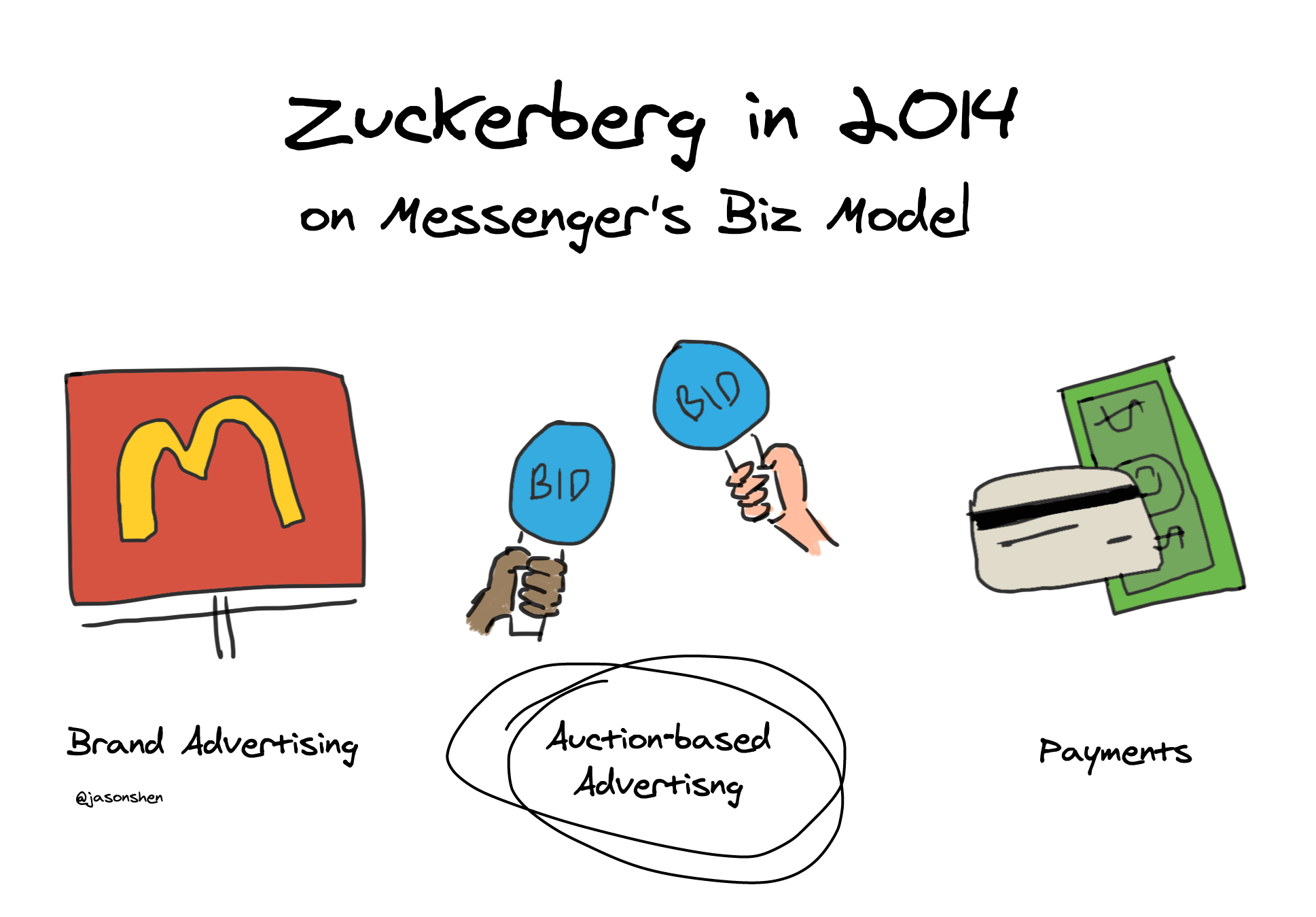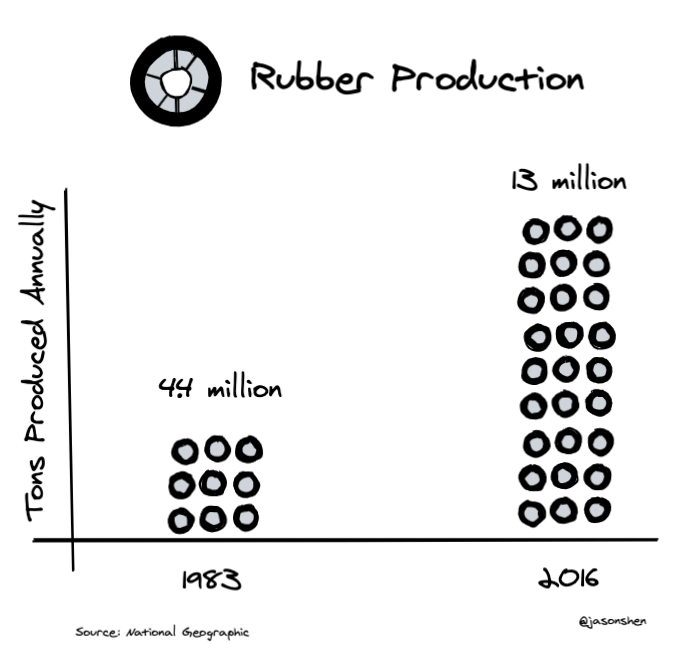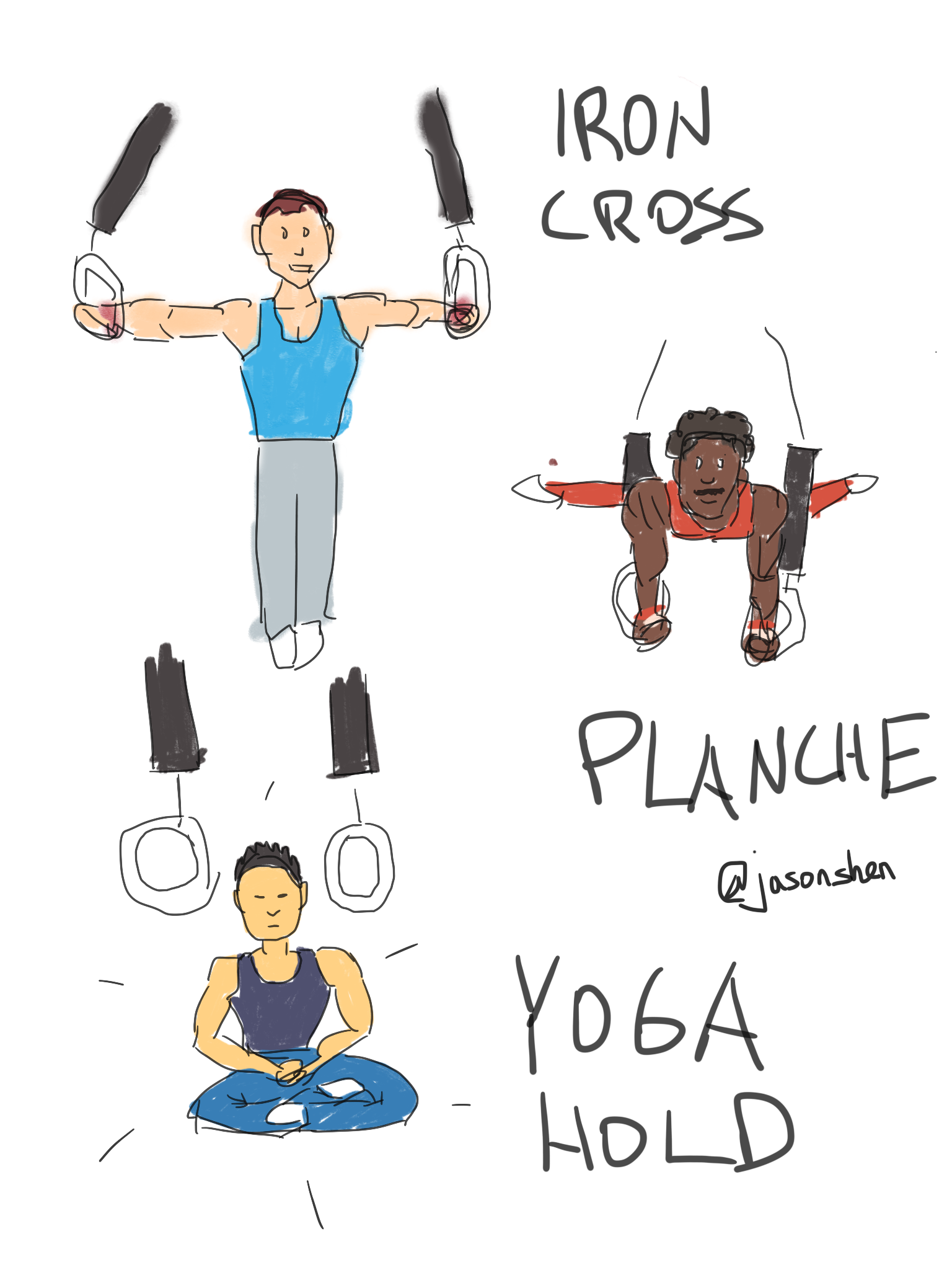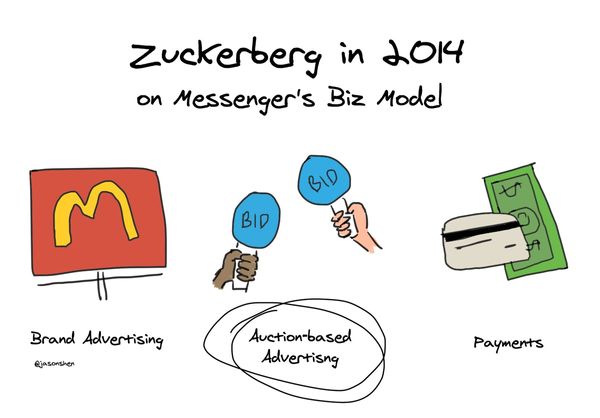🧮 Advertising: Profitable (and therefore Taxable?) + 🚜 The Resilience and Fragility of Rubber + 🪐 Ring Strength
Hey friends,
This is the 8th edition of Making Connections, where we take a random walk down tech, fitness, product thinking, org design, nerd culture, persuasion, and behavior change.
Now with COLORED ILLUSTRATIONS
1. 🧮 Advertising: Profitable (and therefore Taxable?)
Strategy | Finance | Policy

@Sriramk hosts a number of really interesting internal memos from sports, politics and business. Here's one from Mark Zuckerberg talking about the future of FB Messenger in 2014 as an ad platform. He makes the clear point that performance based ads are great because you can extract more profits (2 companies bidding for the same keyword increases the price until it's barely profitable to run the ad)
When I say performance-based ads, I am specifically contrasting to two other potential businesses: brand ads and payments.
I do not believe Messenger is a good medium for brands ads because people need to choose to open messages, which makes it inferior for mass reach of rich content, especially compared with our other products like News Feed and lnstagram.
I also do not believe our business will be payments directly, because charging for payments themselves will not allow us to price discriminate and receive a higher percentage of the value delivered like ads do.
That said, I do expect payments and transactions to be critical in this ecosystem. A great payment system dramatically reduces friction in all transactions and therefore significantly increases the value of ads.
Which makes this argument from the NYTimes Op-Ed in 2019 all the more compelling: A Tax That Could Fix Big Tech
The tax that I propose would be applied to revenue from sales of targeted digital ads, which are the key to the operation of Facebook, Google and the like. At the federal level, Congress could add it as a surcharge to the corporate income tax. At the state level, a legislature could adopt it as a type of sales tax on the revenue a company collects for displaying ads to residents of the state.
A progressive digital ad revenue tax would also make sure that dominant social media platforms bear the brunt of the tax. That’s important: It makes it easier for new companies to enter the market, so consumers will have more choices. A new entrant would also be less likely to be acquired if there’s a tax penalty. A large company might reduce its tax bill by breaking itself into several smaller companies. It would be up to Congress or state legislatures to decide where to place the thresholds at which higher tax rates kick in.
2. 🚜 The Resilience and Fragility of Rubber
Psychology | Environment | Complexity

Let's switch gears for a moment and talk about an everyday material: rubber. Modern rubber was first invented in 1839 when Charles Goodyear discovered how to vulcanize latex from trees with sulfur and heat, creating a tougher, more durable material.
With the advent of the automobile in the early 1900's, rubber soon became a must have product. It's a costly process that requires labor and land: typically taking a month’s worth of latex from four trees to make just one tire. (national geographic) 20th century rubber barons" became unimaginably wealthy capturing enormous tracts of land along the Amazon and exploiting the local population in Brazil to feed the global demand for this magical material.
National Geographic writes:
Rubber has played a largely hidden role in global political and environmental history for more than 150 years. You say you want an industrial revolution? If so, you need three raw materials: iron, to make steel for machinery; fossil fuels, to power that machinery; and rubber, to connect and protect all the moving parts. Try running an automobile without a fan belt or a radiator hose; very bad things will happen within a minute. Want to send coolant around an engine using a rigid metal tube instead of a flexible rubber hose? Good luck keeping it from vibrating to pieces. Having enough steel and coal to make and drive industrial machinery means nothing if the engines fry because you can’t cool them.
Beyond its uses in tires for the billions of cars, trucks, bikes, and planes that take us all over the world. It also makes up gloves, tubes, hoses, conveyer belts, elastic bands, pencil erasers, boots, artificial hearts, roofing membranes, and so much more.
We now make over 13 million tons of natural rubber annually, making it a 41 billion dollar market. Since it's elasticity makes it a great sealant, it's not hyperbolic to say that without rubber, our world would literally fall apart at the seams.
What is rubber so useful? Because it's elastic. It resists deformation. It bounces back into shape. It's stretchy and durable.
In other words, it's resilient.
In rough, bumpy, high pressure environments, we rely a physically resilient materials like rubber . Today, we live in a rough, bumpy, and high pressure world, and must rely on our own mental and emotional resilience if we are to not just survive, but adapt and achieve.
Footnote: In a sad and ironic twist, the production of rubber itself is highly fragile and not resilient. Today most of the world's rubber is made in Southeast Asia, one of the few other areas with the right climate to grow our precious rubber trees. A monoculture crop, they're highly susceptible to blight, and there are almost no blight-resistant varieties being grown. Native forests and lands are burned regularly to make room for more rubber trees, decreasing biodiversity, eroding soil, and draining the land of water
3. 🪐 Ring Strength
Fitness | Gymnastics

(More cartoons - hey you asked for it!)
A new subscriber to Making Connections asked for tips on the rings and I had to oblige. As many of you know, I was previously a junior national and NCAA level mens gymnast. Rings was never my strongest event but I still trained and competed it all the same.
3 fun facts about the rings:
Most people are familiar with the "iron cross" move on the rings, where your arms are stretched out in a T shape as you hang in the air. I did do the cross myself, though the skill on its own is considered quite basic. Gymnastics elements are rated in difficulty from A (easiest) to G (hardest) and the iron cross is merely a B on its own. The value increase when you perform it from or into another element.
The oldest male gymnast to ever compete in the Olympics was Jordan Jovtchev of Bulgaria, who competed 6x (1992, 1996, 2000, 2004, 2008, and 2012 where he was 39). If 30 is considered old for male gymnasts, 39 is prehistoric. As he got older, Jovtchev focused on the rings, which probably put less strain on his aging body. Check him out:
These days, rings are part of Crossfit and other functional movement training programs. It's a great way to build upper body strength without the need for weights. It activates a lot of stabilizer muscles in your shoulders, pecs, and lats which come in handy in real-world situations vs just using machines or even free weights. A set of Rings with straps are super versatile and can be taken easily on the road. Here's a great article from Nerd Fitness on getting started with the ring training and a list of 17 ring exercises with videos
PS - if you like following gymnastics - current and historical - definitely make sure you're following Dvora Meyers, her gymnastics coverage (mostly womens, but some men) is the most clear, riveting, and accurate stuff anywhere.
PPS - Netflix has a damning new documentary on the Larry Nassar scandal and how it rocked US gymnastics to its core called “Athlete A”
Welp, that just about wraps things up for this edition of Making Connections. If you liked it, share it with some frens! Hope you’re in good spirits.
Be well,
Jason

